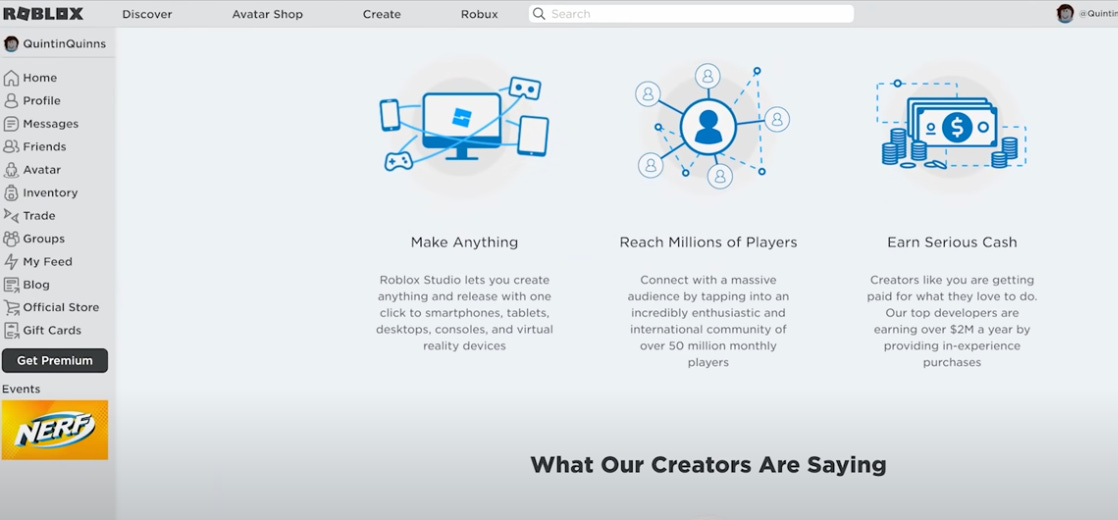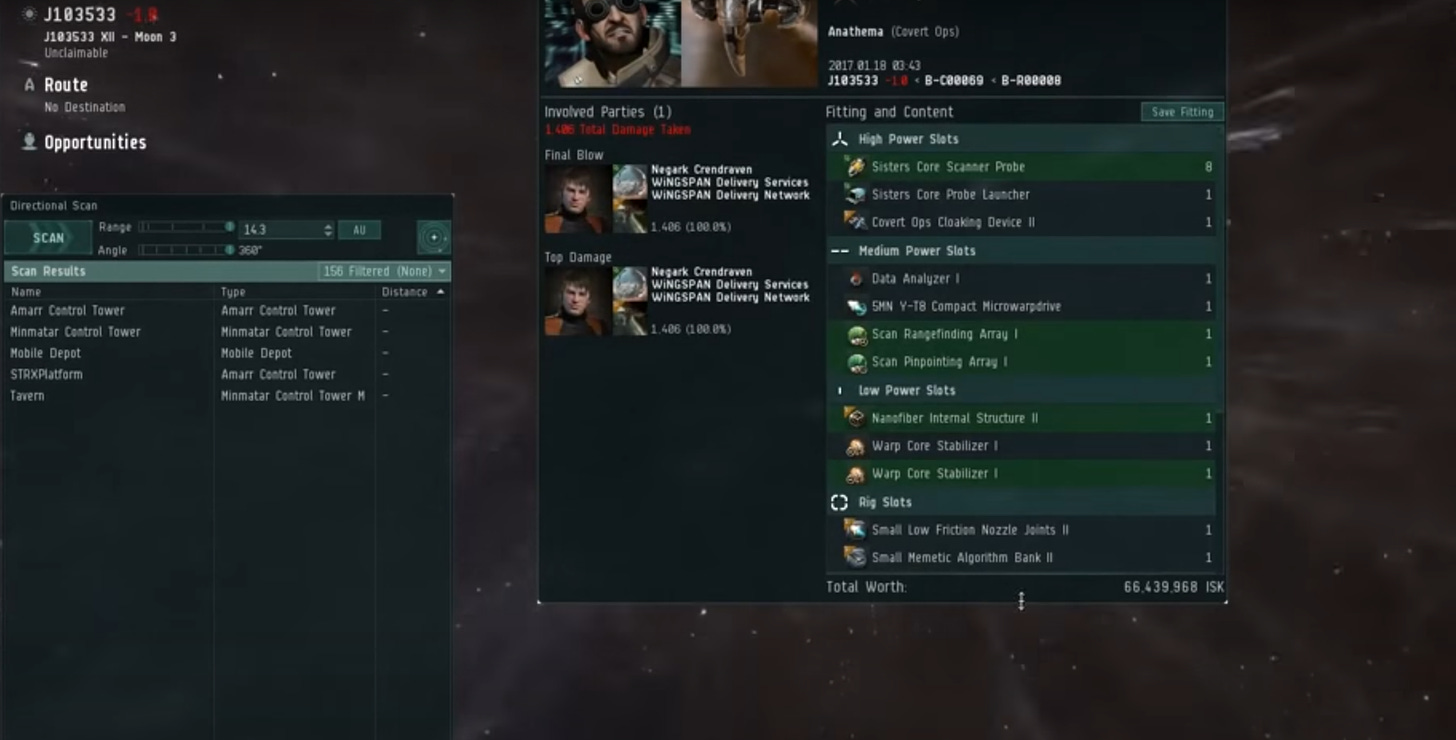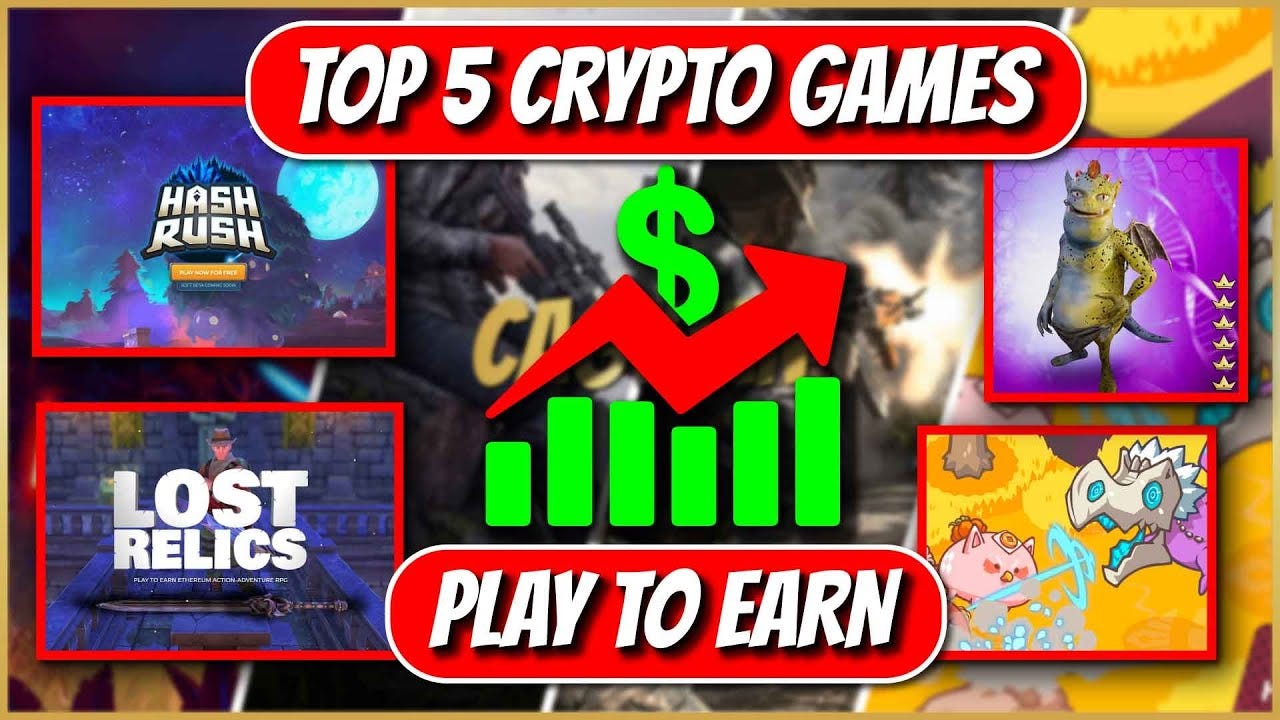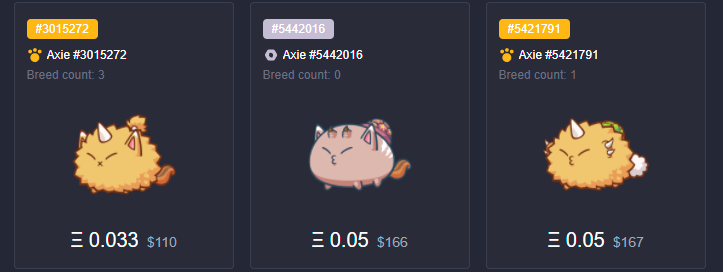Level 5: Axies: Smooth Love Potion Machines, & Play and Earn's Social Contract
Two questions you must ask in any play-and-earn game, and the social contracts that play-and-earn game developers sign.
Greetings fellow adventurers! Today we’ll be doing a deep dive into the unique experiences play-and-earn can give players, beyond… the earning.
My prediction: play-and-earn games that tap upon these levers of experience are the only ones that will remain successful and sustainable in the long run.1
We’ll need to do some groundwork.
Here’s a level 0 analysis: Axie Infinity is a virtual economy, and players can earn by playing with Axies.
We can equip new gear now, new lenses, new ways of seeing — Level 5: Axies are a yield-generating asset. In fact, a self-replicating, Smooth Love Potion machine.
Axie Infinity as Factory
Allow me this analogy.
Imagine this: Axie Infinity is a factory, managed by Sky Mavis.
There are multiple machines within that factory, called Axies.
These Axies can be bought by managers. Managers can either operate the Axie machines themselves, or they can hire someone else to operate them.
Either way, an Axie machine needs an operator to be productive.
Operating an Axie machine generates Smooth Love Potions ($SLP) — raw materials, which can… only be used to make more Axie machines. You cannot use them for anything else.
Whenever Axies or raw materials are produced from that factory and sold, 4.25% of the transaction goes to the factory managers: Sky Mavis.
So when Axies and raw materials are being sold, they’re being sold by the players because players want the raw materials, and Axies. And that’s where the demand for Axies comes from, right?
… right?
So you can see where the analogy breaks down. When a factory makes components like graphics processing units (GPUs), those components can be used in a variety of applications — mining bitcoin, mining ether..2
In contrast, the main utility in holding Smooth Love Potion… is to make more Axies.3 By extension, the utility of holding an Axie, is to make more Axies.
Yes, the analogy broke down. Very quickly.
You know what doesn’t break down?
The Axie machines. They don’t die. They don’t disappear. At least not in any significant amount or manner.
They’ll keep generating more $SLP, and breeding, to make more and more Axie machines that also generate $SLP.
If Axies are seen purely as yield-generating assets, then the moment they stop being the best place to deploy capital, capital will go elsewhere.
Discounted Cash Flows of Axies
The Gouverneur does an excellent, if reductive, analysis of the Axie economy. His central claim: giving out $SLP is unsustainable as there’s no real value being created.
Assume every Axie is the same. Then, the cash flows generated by an Axie are its future SLP gains, & its breeding capacity for new Axies (which also represent cash flow, and breeding capacity for new Axies).
This is implying that every newly created Axie is a promise on MORE SLP over time. That means breeding INCREASES the supply of SLP over time but DECREASES it in the short run.
Every exponentially newly created Axie is however a promise on more newly created SLP over time than was needed for breeding. So as long as SLP holds its value investors are making an exponential profit. (The Gouverneur)
So is play-and-earn doomed? Well… there are some questions to ask here.
When considering how to make a play-and-earn game. Ask yourself these two questions.
(1) Where does the money come from?
With any work, you need money coming in and money coming out.
Therefore, value has to be created at some stage in the cycle.
Recall that the main marketing of play-to-earn (P2E) games thus far has been “make a living off playing games”: players play a P2E game, with the expectation of some non-negligible cash reward.
If we want games to be profitable, and also take on the additional responsibility of providing financial upside for users, the value must come in somewhere.
For most games, it’s fun. Duh!
A game like Call of Duty is fun, for various reasons, and if you make something players want4, they’ll pay for it.
Remember Level 2? Ways players end up paying for games. (The How)
- Their attention. (ads)
- Their time. (engagement => money, or: Time is Money :))
- Their money. (Microtransactions, full-on premium transactions, skins…)
Remember Level 3? Reasons players might end up paying for games. (The Why)
- Progression. (to save time)
- To save their attention. (remove ads)
- Unlock content / new experiences. (expansions)
- Continue playing a game. (subscriptions)
But, all of this is because, at bottom, they find the game fun.
The question for you to answer: is Axie Infinity worth $500 of fun? (The entry price of the lowest 3 Axies.) They very well could be!
However, with Axie’s economic model the way it is, Axie’s price and breeding profitability is largely determined by demand from new players for Axies.
In fact, Axie Infinity acknowledges as much: in their whitepaper, they say exactly that (“the Axie economy will be dependent on growth and new entrants”.)
With this in mind, Axie Infinity is branding themselves on their whitepaper as closer to Facebook or Grab than a traditional video game.
According to their whitepaper, they plan to bring in external capital via:
- Advertising Fees and sponsorships. They’re the largest community of blockchain users in the world, and “there’s value advertising to a community like this”.
- Nonprofit Organizations and Charities. Conceivable, since SLP is apparently now a medium of exchange in the Philippines.
- Government Donation and Grants.
So right now: most of the money in the game is coming from:
(1) speculators, who hope that the price of Axies and $SLP will go up,
(2) private capital (venture capital, friends and family),
(3) and new players.
That’s a precarious position to be in.
The solution here, and I will keep banging this drum, is to rebrand from “Play to Earn”: if you play, you will earn and make money, to “Play and Earn” — player ownership of their assets.
Let’s look at the social contract that game developers sign when they brand their game as play-to-earn and play-and-earn.
The Social Contract
A social contract, in its most general form, is an “agreement between peoples”. It can be formal, but is most often informally defined.
There’s an existing social contract between game developers and the player in any game. It’s notions of “fairness”, or “progression”, or “explainability”.5 If you break these conventions, you’d either better have a good reason, or be Ian Bogost.
A play-to-earn game is still a game, and must fulfil all of those contracts, in addition to some brand new ones.
Play-to-Earn & Play-and-Earn
If you raise money through a pre-sale, or token sale, or a sale of NFT characters, as Star Atlas has done — collecting over 50,000,000 USD of revenue in its Galactic Asset Offering, you should deliver your game.
In fact, not just a high quality game you’d enjoy yourself in good conscience — you promise you’ll deliver an earning experience for gamers.
If you market your game as play-to-earn, you’re making a promise that a player is going to earn when they’re in game.
They will think that, it’s an eventuality, a foregone conclusion, that if they spend $10.00 to enter, they will have $10.00, and a little more.
They see it as buying a little Axie machine, or buying a yield-generating asset, rather than buying an in-game item. That’s a lot of pressure.
But that’s the way it is — the moment it becomes play-to-lose, and the game costs more in gas fees to play than the amount of value it generates (either denominated in USD, or the native cryptocurrency), you have broken your social contract, and will get backlash for it.

That’s a heavy load to carry.
On the other hand, that’s a nice car, right?

So please say goodbye to Play-to-Earn. It was a nice dream, but it’s not happening. It’s not sustainable.
I promise.
But we have something better.
With the Play-and-Earn frame, what game developers implicitly promise to players changes. Play-and-Earn is about true digital ownership: where you had 0% of an asset before, you have between 90-100% of it now.
Play-and-Earn is the promise that your assets will always be yours. You can always build upon them. You can trade them away to anyone else, anytime you like.
Players understand that. Build a community around play-and-earn, and your players will actively manage expectations of other players.
We can do better than 0%.
Here’s an example of ‘metaverse ownership’ in the current world:
Roblox claims to give developers about 24.5% of every dollar that is spent in their game.
You require $1,000 USD worth of Robux, their native currency, in your Roblox account in order to withdraw your ‘earnings’. The kicker: they’ll pay you 35 cents on the dollar for each Robux you withdraw. Most of the (younger) developers are children aged below 13.6
So… we can do better.
The social contract of play-and-earn: “well, now you own 95%. We’ll try our best to not debase your asset, but we don’t take responsibility if it goes down. You were here to play a fun game, yes?”
Now that’s a start.
(2) How do I maintain the value for this asset for holders?
Even with the play-and-earn piece, you’re still a steward of people’s finances. Like it or not, people are going to buy into your game. You’re responsible for a community the moment you allow the first person to give you money. Kickstarter sets out a legal framework for you to seek redress if ‘rugged’.
Value derives from utility.
So the question reduces to: how do I continue providing utility for these assets for holders?
You should be able to map out your utility for the asset. Is the token you’re releasing going to: allow users access to special experiences? Will it be used as a medium of exchange to buy game items that they will find valuable? Give them status-as-a-service?7
You can’t get away from the problem of making something people want.
There’s games that won’t ever need NFTs or tokens. It won’t magically transform a game into a playable one.
You might be able to sell people assets on the hype, and your ability to build that game early on, but one day, you will have to deliver on that asset, and it had best match their expectations. Otherwise, you had best rein in their expectations.
Managing that social contract is a big responsibility, so be careful before you raise.
Value beyond Yield.
Now you might say, that’s a bit unfair. It seems that there’s something grossly unfair about the way you stripped down Axie. It’s not just an economy. It’s a game!
And yes, we know that games produce fun.
Here’s the river.
We claim that play-and-earn games can produce specific, non-reproducible type of experiences that people cannot get elsewhere.
For many, it’s been a dream to make a living playing games. I grew up wanting to play Starcraft professionally, but I went off to study Computer Science instead. Now I just write articles about games and make them, which is good enough for me.
But the new wave of Play-to-Earn games offers users (and the next generation of gamers!) (1) a chance to “earn serious cash”8 playing games, and, even more interestingly, (2) unique experiences of mentorship and menteeship.

We come back again to the question of: where does the money come from?
Established earlier: in games, the money comes from fun. But play-and-earn adds a new kind of fun.
The Unique Selling Point of Play-and-Earn
Play-and-earn can offer something regular games cannot: experiences of loss and triumph tied to external financial rewards.
Play-and-earn games can aim to deliver something beyond financial return.
Axie can deliver on this aspect with the scholarship model: the ability to engage in mentorship and empowerment.
And indeed, that is why the narrative of Yield Guild Games is so powerful: they’re creating a virtual economy and work in the metaverse for people in local communities, and hire community managers to “help scale YGG with a human touch”.

Take a scholar manager I spoke to, very early in my play-and-earn journey.
Let’s call him Kong (for he had a cute baby CyberKongz as his profile picture.)
I was selling him some Sandbox land, and asked him what he wanted to do with it.
He told me that he wanted to make a small estate (gameplay area) for their Axie scholars to hang out, play minigames that help them earn more.
“The typical ratio for SLP is 70% scholar, and 30% manager, but I’m looking at doing 70% scholar, 20% manager, and 10% game prizes they can win.”
When we have such players (and asset holders) in the game, the scholarship model makes a lot more sense. Because players like Kong are willing and able to give up yield for the experience of mentorship.
The game becomes a tool, a social network, and an enabler for Kong to foster communities.
Beyond this, we can, for the very first time, build economic incentives into games and their communities to encourage:
- socializing [if you log on with a friend to play the game, you can get more done together. If you have no friends, make a new one. Reward consistency of interaction, logging in.]
- excellence [in Axie Infinity, if you’re better at PvP, and your MMR is higher, you get more rewards from winning battles]
I met another manager, who shared with me in depth about his relationship with his scholars.9
They coach their scholars, offer internal monthly competitions and incentives, allow switching of Axies that fit their playstyle. So it’s really… an e-sports team.
E-sports, but for everyone. Furthermore, every victory for the player becomes an emotional event, fortified by additional earnings.

Conversely, every loss becomes an intensely emotional event.
(We will expand on scarcity, friction and conflict as drivers of emotion & gameplay in our next Metaversus issue. Yes, it’s on the way — stay tuned…!)
If you’re a Killer persona (Clubs from L3), then you LOVE to know you just destroyed “millions of ISK” worth of cargo in your latest gank.
Some people just like to watch the world burn.
Value Alchemy
The playfulness of a Pudgy Penguin sliding around on the freezing Ethereum blockchain and the mirth generated can be considered of value. The distilled insights on NFTs and crypto provided by Matty to Metakey holders can be considered of value.
The enjoyment of the aesthetic is enough to justify value — does it matter if its virtual or if its in the real world?
If we look upon an Axie as a machine, then we shall fulfil the Governeur’s prophecy.
However, if we take Axie’s value proposition, and believe that:
There are other types of value that Axie players gain through their journey such as:
Joy of owning a pet.
Fun, rest, and relaxation.
Making friends and finding business partners/mentors.
Learning how to use an important new technology. There's no need for paid "blockchain classes".
Then we’re moving somewhere. But I think, in the end, the most significant thing that accounts for Axie’s success is the community mentorship and empowerment angle. That will be one core dynamic driving play-and-earn.
But remember, now — it is not over. Our burden is not light. In fact, it is of urgency, and of grave importance.
Because when we launch our projects, the world will be watching. When we sell our assets, we sign a social contract with players, who are just as hopeful for this future with true digital ownership. So let’s do right by them, by designing our economies, and our games with care, treating player’s funds with respect, and setting careful expectations.
This is what we signed up for. So best be communicative, careful, and think twice.
Wew, that was an intense one! Level 5 took a long time as I was pretty busy with working on play-and-earn games.
I wrote a tutorial on making your own derivative Loot too.
I’ve also been researching deeply into Star Atlas, an open-world, space exploration, grand strategy MMORPG set in a galactic universe, with play-and-earn mechanics and player ownership. (Oh, and you’ll be able to use VR.)
Here’s potential topics for future issues:
- How Conflict & Friction Drives Gameplay: Digital Scarcity in Diablo II's Beta and Star Atlas
- The Instant Crypto Games Stack
- The success of Yield Guild Games (YGG)
As before, please feel free to reply directly to this e-mail with your thoughts. Every question sparks joy: we learn more with each engagement.
If you liked this, please share it with someone who’d benefit from this, or feel free to repost on social media - every share and heart helps. :)
Thank you!
Of course, in the long run, we are all dead.
Oh, and letting people play games and training AI models, I guess.
Thanks to Jether for pointing out an error.
https://whitepaper.axieinfinity.com/gameplay/breeding
Shoutout to the Paul Graham of 2008. http://www.paulgraham.com/good.html
Fairness: I should reasonably be able to solve this game.
Progression: I should be able to advance in this game.
Explainability: I should understand what is going on in this game.
https://www.escapistmagazine.com/gamings-social-contract/
This info is all from People Make Games’ investigation.
https://www.eugenewei.com/blog/2019/2/19/status-as-a-service
To borrow a phrase from Roblox, which has since been removed from their ‘Create’ landing page ever since People Make Games did a investigation. I say this in complete jest, by the way. You can’t promise anyone they can make serious cash.
The Avg column is their average SLP farmed per day. The Farmed column is the total SLP farmed over the last 2 weeks. SLP trades at about 0.09 USD right now, meaning the top earner here made about 26.64 USD per day on average. (Not bad!)










Thanks, help a lot
Really enjoyed your article